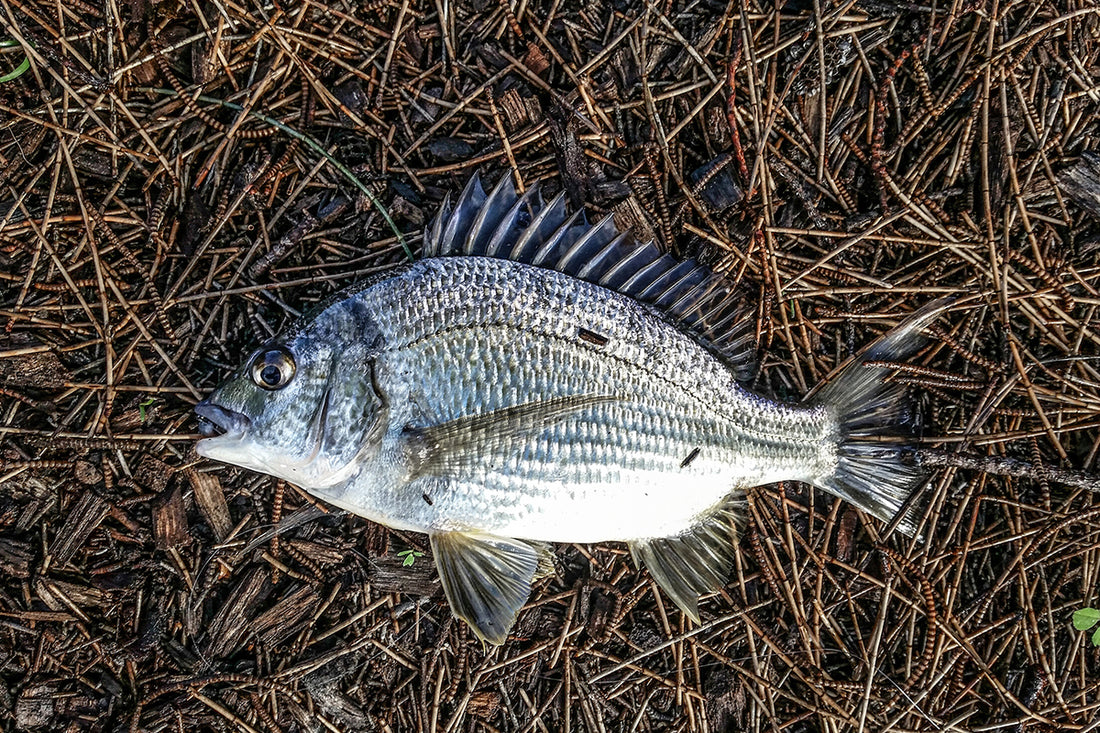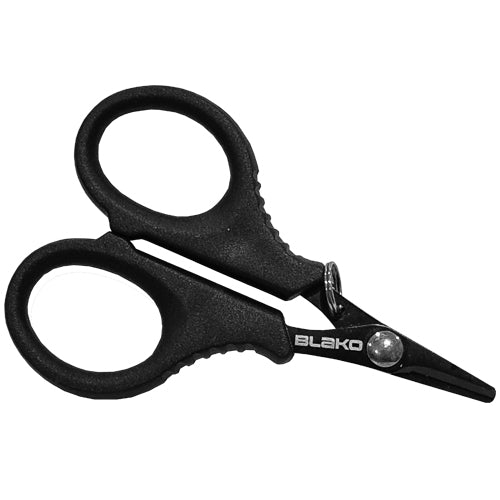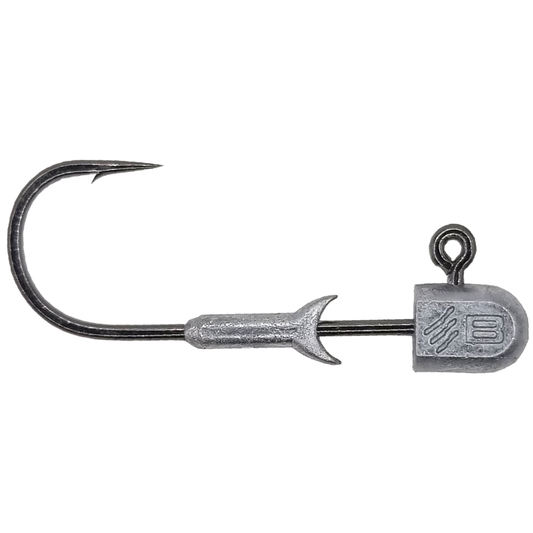
How to Catch Bream: A Complete Guide
Share
Australia’s Most Popular Fish
If there’s one fish that nearly every Australian angler has tangled with, it’s the bream. This hardy, adaptable species holds a special place in the fishing community, and it's not hard to see why. Bream are abundant along Australia’s vast coastline and estuaries, offering anglers a reliable target from the tropical creeks of the north to the cooler waters of Tasmania. Whether you’re a novice casting out a line with bait or an experienced angler using finesse lures, bream provide endless excitement and challenge.
Bream: A Fish for All Australians
Australia is home to three main species of bream: black bream, yellowfin bream, and pikey bream. Each of these species has a distinct range, though they occasionally overlap, giving anglers the chance to catch multiple types in a single area. Black bream are mostly found in the southern waters, yellowfin bream populate the middle latitudes and temperate zones, while pikey bream are limited to the tropical north.
The adaptability of these fish means that they can be found in all sorts of environments, from mangrove-lined creeks to bustling urban harbors. This nationwide coverage has made bream a beloved target for Australians, and many of us have fond memories of catching our first bream on simple bait setups as kids. Their abundance and accessibility make them an ideal species for young anglers and those new to the sport.
Bream's Impact on Australian Fishing Culture
The popularity of bream fishing has contributed significantly to the growth of the fishing tackle industry in Australia, particularly in the 1990s and early 2000s. As anglers began exploring new techniques, tackle companies introduced gear specifically tailored to targeting bream, including rods, reels, lines, and lures designed to enhance the bream fishing experience. Today, brands offer an extensive range of bream-specific gear, supporting everything from beginner setups to advanced equipment for competitive anglers.
An In-Depth Look at Bream Species and Their Habits
While bream may all look somewhat similar, each species has unique behaviors, seasonal patterns, and feeding preferences. Here, we focus on the two most widely targeted species: black bream and yellowfin bream.
Southern Black Bream: The Trophy of the South
Southern black bream (Acanthopagrus butcheri) are highly prized by anglers in southern Australia, ranging from Shark Bay in Western Australia across to Sydney, and encompassing all of Tasmania’s coastline. Tasmania, in particular, is famous for its black bream fishing, with the state’s cooler waters and rugged estuaries creating perfect conditions for these fish to thrive.
Southern black bream are known for their larger average size, with fish over a kilo common in many areas. This makes them a prized catch, particularly when fishing in estuaries and rivers where they can grow to impressive sizes.
Seasonal Changes and Fishing Techniques for Black Bream
Summer: During the warmer months, black bream move into shallow estuarine areas, taking advantage of the abundant prey like prawns, small baitfish, crabs, and insects. Anglers often use lightly-weighted soft plastics or topwater lures to entice bream into feeding in shallow water. Summer evenings, in particular, can offer thrilling surface action as bream come up to chase lures skimming just below the surface.
Autumn and Winter: As temperatures drop, black bream transition to deeper waters, often congregating around rocky structures or deep channels. Crankbaits and sinking lures that mimic small fish are highly effective, especially when fished close to rock walls or other submerged structures. Winter sees black bream migrating further into deeper channels or estuary mouths, where they seek stable temperatures and food sources.
Spring: Black bream begin moving back into the shallows in spring as they prepare to spawn in the upper reaches of rivers. Fishing during this time requires a combination of techniques, using crankbaits and topwater presentations depending on the water temperature and bream activity. Areas where saltwater meets freshwater are prime locations for targeting spawning bream.
For black bream, lure anglers rely on a mix of finesse techniques and heavier setups as needed. In summer, lighter gear with topwater lures provides the excitement of surface strikes, while winter calls for stronger lines and deep-diving crankbaits to reach fish sheltering near the bottom.
Yellowfin Bream: A Different Kind of Challenge
Yellowfin bream (Acanthopagrus australis and A. morrisoni) are a bit different from their black bream cousins. They’re known for their fighting ability and wariness, which makes them a challenging target. Yellowfin bream are found primarily along Australia’s eastern and northern coasts, with one strain occupying the east coast and another in the west. In the east, yellowfin bream can be caught from Victoria’s Gippsland up to Queensland, while the western strain is more common along the Northern Territory and into Western Australia.
Grayson Fong, an experienced angler based in Queensland, highlights the unique behavior of yellowfin bream. "They fight harder gram for gram," he says. "Their preference for warmer waters makes them more active, and they tend to move around more than black bream."
Seasonal Patterns and Techniques for Yellowfin Bream
Summer: During summer, yellowfin bream can be found cruising shallow waters, often in small schools. This is the best time to target them with surface lures and shallow-diving crankbaits. The warm water temperatures mean that bream are actively feeding, often on prawns and baitfish. They tend to hug close to structure like mangroves, rock walls, and pontoons, and their feeding habits make them highly responsive to topwater action.
Autumn: As temperatures cool, yellowfin bream shift to deeper waters in preparation for their winter spawning. They become more responsive to the tides, feeding shallower at high tide and returning to deeper channels as the tide recedes. Autumn is a great time for anglers to use versatile presentations, including soft plastics and crankbaits that can be worked at different depths.
Winter Spawning: Winter is spawning season for yellowfin bream, and during this time, they congregate in deeper waters near river mouths and estuary entrances. Fishing for spawning yellowfin bream often involves slow presentations with sinking lures, plastics, and crab imitations. Bait anglers targeting spawning yellowfin can also do well using paternoster rigs and heavier sinkers to keep their baits deep in the channels.
Spring: In spring, yellowfin bream begin to move back to the shallows. The warmer water and increased food availability make them less wary and more aggressive, providing anglers with exciting opportunities to catch them with a range of techniques, including topwater lures, shallow crankbaits, and live bait.
Yellowfin bream’s transient nature and sensitivity to temperature make them a bit trickier to target, but their hard-fighting nature and adaptability to various environments make them highly rewarding.
Bream Fishing Across the Country: Accessible and Engaging
Bream fishing is one of Australia’s most accessible and engaging angling experiences. Whether you’re using bait or lures, bream offer something for everyone, from the youngest beginner to the seasoned tournament angler. Their nationwide presence allows anglers of all levels to practice their craft and hone their techniques year-round.
From the northernmost mangrove creeks to the southern estuaries, bream have a remarkable ability to adapt to diverse conditions. This adaptability, along with their wariness and fighting ability, has cemented their status as the cornerstone of recreational fishing in Australia.
Key Takeaways for Bream Fishing
Target Structure: Bream love structure, whether it’s a rocky outcrop, mangrove, or jetty. Fish along the edges and use a variety of lures or baits that mimic their natural prey.
Understand Seasonal Patterns: Bream behavior shifts with the seasons. Tailor your fishing techniques and lure choice to match the time of year, targeting shallows in summer and deeper waters in winter.
Versatile Tackle: Bream-specific tackle has evolved to meet the needs of anglers. From ultralight rods for finesse fishing to more robust setups for deeper water, having versatile gear enhances your experience and success rate.
Final Thoughts
For many Australian anglers, bream are the gateway to a lifelong love of fishing. They’re accessible, challenging, and full of surprises, offering something new with every season and location. Whether you’re casting with bait or experimenting with lures, bream fishing is an experience that brings both satisfaction and skill-building.
With a blend of knowledge, patience, and the right gear, anglers can make the most of their time on the water. So, next time you’re near the coast, grab your rod and gear up for an exciting day of bream fishing—Australia’s most iconic angling adventure awaits!
If there’s one fish that nearly every Australian angler has tangled with, it’s the bream. This hardy, adaptable species holds a special place in the fishing community, and it's not hard to see why. Bream are abundant along Australia’s vast coastline and estuaries, offering anglers a reliable target from the tropical creeks of the north to the cooler waters of Tasmania. Whether you’re a novice casting out a line with bait or an experienced angler using finesse lures, bream provide endless excitement and challenge.
Bream: A Fish for All Australians
Australia is home to three main species of bream: black bream, yellowfin bream, and pikey bream. Each of these species has a distinct range, though they occasionally overlap, giving anglers the chance to catch multiple types in a single area. Black bream are mostly found in the southern waters, yellowfin bream populate the middle latitudes and temperate zones, while pikey bream are limited to the tropical north.
The adaptability of these fish means that they can be found in all sorts of environments, from mangrove-lined creeks to bustling urban harbors. This nationwide coverage has made bream a beloved target for Australians, and many of us have fond memories of catching our first bream on simple bait setups as kids. Their abundance and accessibility make them an ideal species for young anglers and those new to the sport.
Bream's Impact on Australian Fishing Culture
The popularity of bream fishing has contributed significantly to the growth of the fishing tackle industry in Australia, particularly in the 1990s and early 2000s. As anglers began exploring new techniques, tackle companies introduced gear specifically tailored to targeting bream, including rods, reels, lines, and lures designed to enhance the bream fishing experience. Today, brands offer an extensive range of bream-specific gear, supporting everything from beginner setups to advanced equipment for competitive anglers.
An In-Depth Look at Bream Species and Their Habits
While bream may all look somewhat similar, each species has unique behaviors, seasonal patterns, and feeding preferences. Here, we focus on the two most widely targeted species: black bream and yellowfin bream.
Southern Black Bream: The Trophy of the South
Southern black bream (Acanthopagrus butcheri) are highly prized by anglers in southern Australia, ranging from Shark Bay in Western Australia across to Sydney, and encompassing all of Tasmania’s coastline. Tasmania, in particular, is famous for its black bream fishing, with the state’s cooler waters and rugged estuaries creating perfect conditions for these fish to thrive.
Southern black bream are known for their larger average size, with fish over a kilo common in many areas. This makes them a prized catch, particularly when fishing in estuaries and rivers where they can grow to impressive sizes.
Seasonal Changes and Fishing Techniques for Black Bream
Summer: During the warmer months, black bream move into shallow estuarine areas, taking advantage of the abundant prey like prawns, small baitfish, crabs, and insects. Anglers often use lightly-weighted soft plastics or topwater lures to entice bream into feeding in shallow water. Summer evenings, in particular, can offer thrilling surface action as bream come up to chase lures skimming just below the surface.
Autumn and Winter: As temperatures drop, black bream transition to deeper waters, often congregating around rocky structures or deep channels. Crankbaits and sinking lures that mimic small fish are highly effective, especially when fished close to rock walls or other submerged structures. Winter sees black bream migrating further into deeper channels or estuary mouths, where they seek stable temperatures and food sources.
Spring: Black bream begin moving back into the shallows in spring as they prepare to spawn in the upper reaches of rivers. Fishing during this time requires a combination of techniques, using crankbaits and topwater presentations depending on the water temperature and bream activity. Areas where saltwater meets freshwater are prime locations for targeting spawning bream.
For black bream, lure anglers rely on a mix of finesse techniques and heavier setups as needed. In summer, lighter gear with topwater lures provides the excitement of surface strikes, while winter calls for stronger lines and deep-diving crankbaits to reach fish sheltering near the bottom.
Yellowfin Bream: A Different Kind of Challenge
Yellowfin bream (Acanthopagrus australis and A. morrisoni) are a bit different from their black bream cousins. They’re known for their fighting ability and wariness, which makes them a challenging target. Yellowfin bream are found primarily along Australia’s eastern and northern coasts, with one strain occupying the east coast and another in the west. In the east, yellowfin bream can be caught from Victoria’s Gippsland up to Queensland, while the western strain is more common along the Northern Territory and into Western Australia.
Grayson Fong, an experienced angler based in Queensland, highlights the unique behavior of yellowfin bream. "They fight harder gram for gram," he says. "Their preference for warmer waters makes them more active, and they tend to move around more than black bream."
Seasonal Patterns and Techniques for Yellowfin Bream
Summer: During summer, yellowfin bream can be found cruising shallow waters, often in small schools. This is the best time to target them with surface lures and shallow-diving crankbaits. The warm water temperatures mean that bream are actively feeding, often on prawns and baitfish. They tend to hug close to structure like mangroves, rock walls, and pontoons, and their feeding habits make them highly responsive to topwater action.
Autumn: As temperatures cool, yellowfin bream shift to deeper waters in preparation for their winter spawning. They become more responsive to the tides, feeding shallower at high tide and returning to deeper channels as the tide recedes. Autumn is a great time for anglers to use versatile presentations, including soft plastics and crankbaits that can be worked at different depths.
Winter Spawning: Winter is spawning season for yellowfin bream, and during this time, they congregate in deeper waters near river mouths and estuary entrances. Fishing for spawning yellowfin bream often involves slow presentations with sinking lures, plastics, and crab imitations. Bait anglers targeting spawning yellowfin can also do well using paternoster rigs and heavier sinkers to keep their baits deep in the channels.
Spring: In spring, yellowfin bream begin to move back to the shallows. The warmer water and increased food availability make them less wary and more aggressive, providing anglers with exciting opportunities to catch them with a range of techniques, including topwater lures, shallow crankbaits, and live bait.
Yellowfin bream’s transient nature and sensitivity to temperature make them a bit trickier to target, but their hard-fighting nature and adaptability to various environments make them highly rewarding.
Bream Fishing Across the Country: Accessible and Engaging
Bream fishing is one of Australia’s most accessible and engaging angling experiences. Whether you’re using bait or lures, bream offer something for everyone, from the youngest beginner to the seasoned tournament angler. Their nationwide presence allows anglers of all levels to practice their craft and hone their techniques year-round.
From the northernmost mangrove creeks to the southern estuaries, bream have a remarkable ability to adapt to diverse conditions. This adaptability, along with their wariness and fighting ability, has cemented their status as the cornerstone of recreational fishing in Australia.
Key Takeaways for Bream Fishing
Target Structure: Bream love structure, whether it’s a rocky outcrop, mangrove, or jetty. Fish along the edges and use a variety of lures or baits that mimic their natural prey.
Understand Seasonal Patterns: Bream behavior shifts with the seasons. Tailor your fishing techniques and lure choice to match the time of year, targeting shallows in summer and deeper waters in winter.
Versatile Tackle: Bream-specific tackle has evolved to meet the needs of anglers. From ultralight rods for finesse fishing to more robust setups for deeper water, having versatile gear enhances your experience and success rate.
Final Thoughts
For many Australian anglers, bream are the gateway to a lifelong love of fishing. They’re accessible, challenging, and full of surprises, offering something new with every season and location. Whether you’re casting with bait or experimenting with lures, bream fishing is an experience that brings both satisfaction and skill-building.
With a blend of knowledge, patience, and the right gear, anglers can make the most of their time on the water. So, next time you’re near the coast, grab your rod and gear up for an exciting day of bream fishing—Australia’s most iconic angling adventure awaits!







